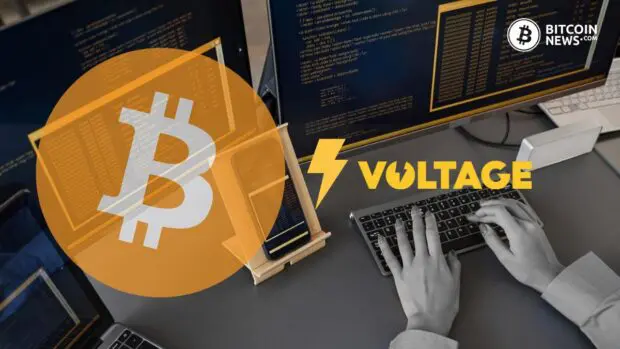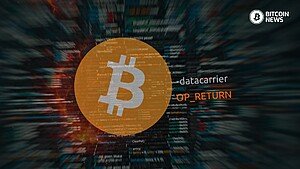Table of Contents
APIs (Application Programming Interfaces) have become crucial to software development and the digital economy. They allow different applications to communicate with each other by establishing a set of protocols. However, API monetization can be challenging for businesses.
While companies like Google, Facebook, and Twitter provide free public APIs, most businesses want to generate revenue from the APIs they develop. An API represents years of R&D and innovation for a company. It makes its unique data and services available to external developers, so companies naturally want to capitalize on these investments.
However, putting a price tag on API usage is a challenging process. Companies have to strike a balance between monetization and developer adoption. More relaxed monetization models can limit an API’s reach and utilization. On the other hand, they are giving away API access for free, which leaves potential revenue on the table.
Businesses must also contend with complex usage metrics like monthly active users, peak loads, and tiered pricing models, which makes determining the right monetization strategy for an API challenging.
This article will explain a clever way to monetize APIs with a pay-as-you-go model. This model can reduce user friction, increase revenue, and improve security.
Can You Monetize an API?
APIs have become crucial assets for modern businesses. We are going to breakdown are going to breakdown two main approaches to API monetization:
Direct API Monetization
Direct monetization means charging developers and end users for API usage. This could involve:
- Per call pricing – Charging for each API call or request
- Rate limits – Limiting how many API requests a user can make unless they pay
- Tiered pricing – Offering different pricing tiers based on usage levels
- Pay per asset pricing – Charging for access to specific data assets via the API
Direct monetization generates revenue directly from the API itself. But it can be complex to implement and may limit API adoption.
Indirect API Monetization
Indirect monetization does not charge for API usage. Instead, the API is a gateway to monetize other products or services. For example:
- Increase app usage – Free APIs can attract more developers and end users, generating more revenue from the main app.
- Advertising – The API provides data that enables more targeted advertising.
- Affiliate marketing – The API promotes affiliated products and you get a cut of sales.
- Data insights – The API data provides valuable analytics and business insights you can monetize.
Indirect models allow businesses to unlock more value from their APIs. But measuring the ROI can be difficult. Companies often use a mix of direct and indirect monetization strategies.
How Companies Make Money from APIs
There are several common ways that companies generate revenue from APIs:
Usage-based Pricing
Usage-based pricing charges API consumers based on how much they use the API. This involves metering API calls and charging per call, per thousand calls, per million calls, etc. Usage charges can be based on the number of requests, bandwidth consumed, number of records accessed, or other metrics. This model allows the monetization of APIs with very granular pricing.
Tiered Pricing
With tiered pricing, access to API features is grouped into different packages or tiers. Higher tiers provide greater capabilities, usage allowances, or additional features. For example, a basic tier may allow up to 10,000 API calls per month, while higher tiers allow 100,000 or 500,000 calls for a higher fee. Tiers work well for monetizing access to premium API capabilities.
Developer Plans
Developer plans provide packaged access to APIs tailored to different types of developers. For example, plans may differentiate between individual developers, startups and enterprises. Higher-level plans may offer higher usage limits, more support, additional capabilities or other benefits. Developer plans make it easy for different customers to find the right level of API access.
Value Added Services
Companies can also earn money by offering services in addition to core API access. These value-added services provide additional revenue streams. Examples include premium support plans, custom development services, customized APIs, data enrichment services, API management tools, and training.
Introducing the L402 Protocol
The L402 protocol provides a clever solution for monetizing APIs by combining the capabilities of macaroons and the Lightning Network.
Overview of L402 Protocol
L402, formerly LSAT, is an open standard that enables charging for API usage while handling authentication for distributed systems. It brings together the strengths of two key technologies:
- Macaroons – Used for improved authentication and permissions
- Lightning Network – Used for enabling micropayments
With L402, macaroons are tied to Lightning invoices to create “Lightning API keys”. This allows for separating the logic of payments, permissions, and request fulfillment.
Combining Macaroons and Lightning Network
Here’s how L402 works:
- Macaroons provide authentication tokens that are verifiable using cryptography. They can encode permissions and be delegated.
- Lightning invoices allow obtaining a secret preimage by making a payment.
- L402 combines these by tying macaroons to Lightning invoices via their payment hash.
- Validating the macaroon cryptographically guarantees the invoice was paid.
This separation is perfect for distributed systems where issuance and verification should be decentralized.
Enabling Per-Use Pricing for APIs
L402 enables per-use pricing of APIs in satoshis using Lightning Network micropayments. Companies can provide API keys to customers along with Lightning invoices.
Customers pay invoices to obtain the secret preimage and use the paid key for API access. Companies don’t need to check invoice payment, just validate the key.
L402 allows pricing API use cases like per-request, tiered access, surge pricing, etc. It facilitates pay-as-you-go API monetization.
How L402 Helps Monetize APIs
L402 enables several key benefits for companies looking to monetize their APIs:
Per-Use Pricing Model
With L402, companies can implement per-use pricing for API access. Instead of a flat monthly fee, customers pay a small fee each time they call the API. This “pay as you go” approach is attractive for customers who want to try out an API or have variable usage needs. Companies can price API calls based on volume tiers and even implement surge pricing during peak demand.
Reduced Infrastructure Costs
By monetizing API usage, companies can reduce infrastructure costs. Revenue from API fees helps offset the server, bandwidth, and operational expenses required to host and maintain the API. Companies don’t have to overprovision capacity for infrequent spikes in usage, and the per-use pricing aligns costs with actual API usage.
Improved Cash Flow
L402 provides instant settlement of API fees over the Lightning network. Companies get paid immediately when customers call the API, with no billing cycles or payment terms to worry about. This results in smoother, more predictable cash flow than monthly subscription plans. Companies don’t have to float API usage during the time between service delivery and customer payment.
Better Access Control
With L402, access to the API is cryptographically tied to payment. Customers must present a valid L402 token to call the API, which is only issued after paying an invoice. This prevents freeloaders and enforces payment. Companies maintain full control over who can access the API. L402 also supports expiring tokens and rate limits for more advanced access policies.
Implementing L402 for an API
Integrating L402 into an existing API infrastructure involves a few key steps:
Integrating L402 into API Infrastructure
- Set up an L402-enabled reverse proxy like Aperture before your API endpoints. This proxy will handle issuing macaroons, invoices, and validating requests.
- Configure the proxy with the endpoints and pricing rules for your API. This allows customizing which endpoints require authentication and payments.
- Point your API traffic to the proxy, rather than directly to the API server. The proxy will then handle all L402 logic before passing requests to the API.
Issuing Macaroons and Invoices
- When a new user requests, the proxy will generate a macaroon with specified permissions and pair it with a Lightning invoice.
- The macaroon and invoice are returned to the user. This allows them to pay the invoice to get the secret preimage.
- Macaroons can have customized permissions, expiration times, and more granular access control rules.
Validating Requests and Payments
- When a request comes in, the proxy first validates the macaroon signature to ensure it is properly signed.
- It then checks for the valid preimage that could only be obtained by paying the paired Lightning invoice.
- With a valid macaroon and preimage, the request is authenticated and paid for. The proxy passes it through to the API server.
- If authentication or payment fails, the proxy returns an error without burdening the API server.
L402 allows the proxy to handle all permissioning and payment logic separately from the API implementation. This makes integrating monetization into an existing API easy with minimal code changes. The proxy validates each request so the API server can focus on serving responses.
Benefits of Using L402
Using the L402 protocol to monetize APIs provides several key benefits:
More Granular Pricing
L402 enables much more granular pricing models compared to traditional API monetization. Rather than a set monthly fee, you can charge per API call or request. This “pay as you go” approach allows for usage-based billing. Companies can customize dynamic pricing too based on demand, time of day, type of request, and other factors.
Increased Revenue
By leveraging usage-based billing, companies can generate more revenue from their APIs. They can capture more value from high-usage customers rather than capping monthly fees. This helps maximize monetization from your API investment.
Reduced Friction for Users
L402 reduces friction for API consumers since they only pay for what they use. There’s no large upfront commitment or monthly fee. This “pay as you go” model makes it easy for developers to integrate your API and grow usage over time.
Improved Security
L402 provides better security by separating authentication and authorization from payment validation. The cryptographic mechanisms ensure validity of API requests. This prevents abuse or exploitation of the API. The protocol also enables delegated access so companies can securely share API access.
Conclusion
Monetizing APIs can be challenging, but implementing solutions like the L402 protocol enables efficient and scalable monetization. Here’s a summary of the key points:
- APIs provide valuable data and services that companies want to monetize. There are various business models for generating revenue from APIs.
- Steps for monetizing an API include identifying the value, setting pricing, controlling access, tracking usage, and handling billing.
- Challenges arise around discovering the right pricing, preventing abuse, scaling the infrastructure, and managing cash flow.
- L402 combines Lightning Network micropayments with Macaroons authentication to enable pay-per-use API monetization.
- With L402, businesses can charge tiny amounts per API call while avoiding complex billing. Customers get easy pay-as-you-go access.
- The Aperture proxy implements L402, acting as a reverse proxy to handle authentication, permissions, payments and forwarding requests.
- Overall, L402 enables efficient monetization at scale without compromising speed or security for API-based services. It’s a promising solution that solves many challenges when monetizing APIs.
You can begin monetizing APIs over the Lightning Network today with Voltage, a Bitcoin Development platform that makes integrating Bitcoin and Lighting into your product or service easy with APIs and integrations.










